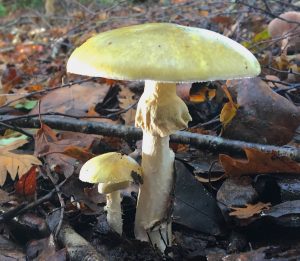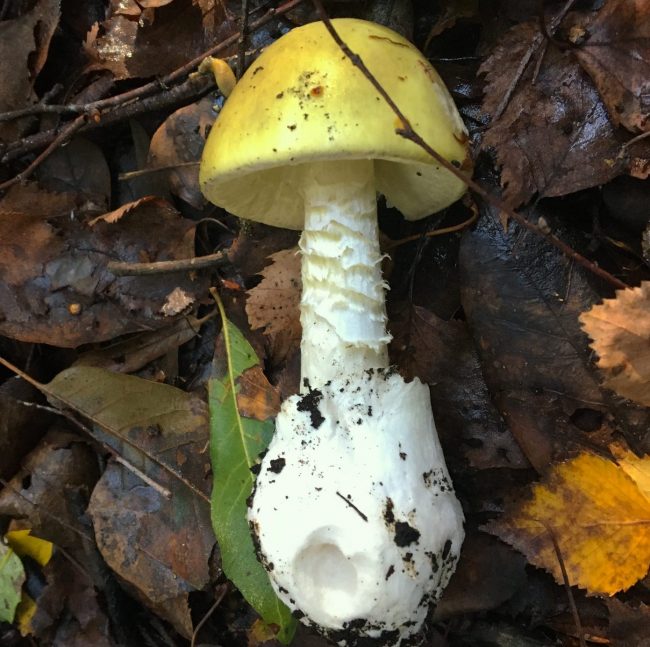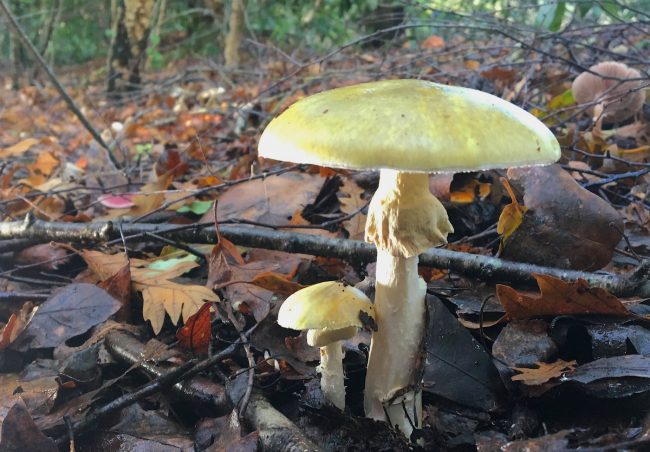Death from the woods

A recent court case centred around the use of the death cap mushroom to poison people at a dinner party. The use of this fungus to kill people is not as unusual as you might expect. It may have been involved in the death of the Roman emperor Claudius, and that of Pope Clement VII in 1534. The death cap was also implicated in the death of the composer Johann Schobert. Having collected wild mushrooms in Pré-Saint-Gervais, he was told that they were not edible, indeed poisonous. Nevertheless, he used them to make mushroom soup. He and his wife, and one of his children died after consuming the soup.

A young Death Cap showing the somewhat hairy stem
The death cap looks inoffensive, with a pale yellow cap and white gills and can be mistaken for edible species if fungi. It thought to be responsible for the vast majority of fungal related deaths. The active compound is a toxin called alpha-amanitin. It is absorbed through the small intestine and as it circulates in the blood stream, it passes to the liver and then to the gall bladder. The toxin then enters the intestine again when the bile is released when the person next eats. This cycle may repeat several times, with the toxin inflicting more and more damage.

Death Cap (Amanita phalloides)
Why the death cap makes this toxin is not clear. It may deter insects and other invertebrates from eating the mushroom, or may help it establish mycorrhizal relationships by ‘interfering' with rival fungi. Interestingly, the death cap was once assumed to be native to Europe, but it is now to be found America and other parts of the world. It is thought to have travelled on the mycorrhizae of imported trees
For further details of the toxin(s) produced by the death cap, and its reproduction - see the New Scientist 6th September 2025.
Photos by Jasper, see his blogs on fungi month by month.
Comments are closed for this post.
